 W
WAhegao (アヘ顔) is a term in Japanese pornography for an exaggerated facial expression of characters during sex, typically with rolling or crossed eyes, protruding tongue, and slightly reddened face, to show enjoyment or ecstasy. The style is often used in erotic manga, anime, and video games.
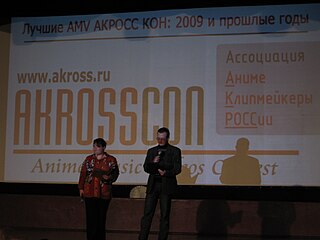 W
WAn anime music video (AMV), known in wasei-eigo as MAD, is a fan-made music video consisting of clips from one or more Japanese animated shows or movies set to an audio track, often songs or promotional trailer audio. The term is generally specific to Japanese anime, however, it can occasionally include footage from other mediums, such as American animation, live action, or video games. AMVs are not official music videos released by the musicians, they are fan compositions which synchronize edited video clips with an audio track. AMVs are most commonly posted and distributed over the Internet through AnimeMusicVideos.org, video downloads and YouTube. Anime conventions frequently run AMV contests who usually show the finalists/winner's AMVs.
 W
WA bun is a type of hairstyle in which the hair is pulled back from the face, twisted or plaited, and wrapped in a circular coil around itself, typically on top or back of the head or just above the neck. A bun can be secured with a hair tie, barrette, bobby pins, one or more hair sticks, a hairnet, or a pen or pencil. Hair may also be wrapped around a piece called a "rat". Alternatively, hair bun inserts, or sometimes rolled up socks, may also be used to create donut-shaped buns. Buns may be tightly gathered, or loose and more informal.
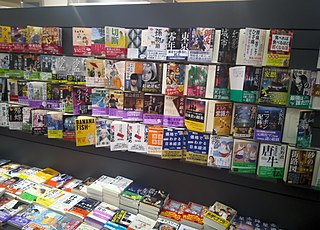 W
WIn Japan, bunkobon (文庫本) are small-format paperback books, designed to be affordable and space saving.
 W
WA catgirl is a female kemonomimi character with feline traits, such as cat ears , a cat tail, or other feline characteristics on an otherwise human body. Catgirls are found in various fiction genres and in particular Japanese anime and manga.
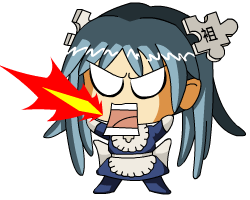 W
WChibi is a Japanese slang word describing something short. The term is widely used to describe a specific style of caricature where characters are drawn in an exaggerated way: small and chubby, with stubby limbs and oversized heads. This style of artwork, also known as super deformed, has since found its way into anime and manga fandom through its usage in manga works.
 W
WCosplay, a portmanteau of "costume play", is an activity and performance art in which participants called cosplayers wear costumes and fashion accessories to represent a specific character. Cosplayers often interact to create a subculture, and a broader use of the term "cosplay" applies to any costumed role-playing in venues apart from the stage. Any entity that lends itself to dramatic interpretation may be taken up as a subject. Favorite sources include anime, cartoons, comic books, manga, television series, and video games. The term is composed of the two aforementioned counterparts - costume and role play.
 W
WA dojikko (ドジっ娘), in otaku culture terminology, refers to an extremely clumsy female. The type is used as a stock character in Japanese light novels, anime, and manga.
 W
WA doujin shop is a store that specializes in doujinshi, self-published works. They exist mainly in Japan. Doujin shops can be both brick and mortar as well as online stores. Some sell only second-hand doujinshi, but particularly larger chain stores also sell new doujinshi. Many doujin shops also handle other kinds of doujin works, such as doujin music or doujin games, or commercially published popular media such as manga and anime.
 W
WA doujinshi convention is a type of event dedicated to the sale of doujinshi, or self-published works. These events are known in Japanese as doujin sokubaikai or doujinshi sokubaikai. Thousands of doujinshi conventions take place in Japan every year, but doujinshi conventions are also held in other East Asian countries, and sometimes outside that region as well.
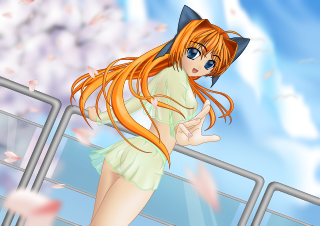 W
WEcchi is an often used slang term in the Japanese language for playfully sexual actions. As an adjective, it is used with the meaning of "sexy", "dirty" or "naughty"; as a verb, ecchi suru means “to have sex” or, as a noun, to describe someone of lascivious behavior. It is perhaps softer than the Japanese word ero, and does not imply perversion in the way hentai does.
 W
WFan service , fanservice or service cut , is material in a work of fiction or in a fictional series that is intentionally added to please the audience, often sexual in nature, such as nudity. The term originated in Japanese in the anime and manga fandom, but has been used in other languages and media. It is about "servicing" the fan – giving the fans "exactly what they want." Fan service can also refer to other stories that contain visual elements.
 W
WA fansub is a version of a foreign film or foreign television program, typically anime or dorama which has been translated by fans and subtitled into a language usually other than that of the original.
 W
WHammerspace is a fan-envisioned extradimensional, instantly accessible storage area in fiction, which is used to explain how animated, comic, and game characters can produce objects out of thin air. Typically, when multiple items are available, the desired item is available on the first try or within a handful of tries.
 W
WHentai is anime and manga pornography. A loanword from Japanese, the original term does not describe a genre of media, but rather an abnormal sexual desire or act, as an abbreviation of hentai seiyoku . In addition to anime and manga, hentai works exist in a variety of media, including artwork and video games.
 W
WAn image song or character song is a song on a tie-in single or album for an anime, game, dorama, manga, or commercial product that is sometimes sung by the voice actor or actor of a character, in character with backing vocals. It is meant to give a sense of the personality of the character.
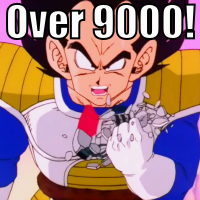 W
W"It's Over 9000!", also known as simply "Over 9000!", is an internet meme that became popular in 2006, involving a change made for English localizations of an episode of the Dragon Ball Z anime television series titled "The Return of Goku", which originally aired on April 19, 1997. The phrase is typically used as an innumerable quantifier to describe a large quantity of something. Variations of the phrase are also employed as a form of trolling.
 W
WAn ita-bag is a handbag, backpack or other kind of bag covered in badges, buttons, figurines and other merchandise pertaining to anime and manga fandom. In Japan, ita-bags are a popular piece of apparel among female anime and manga fans.
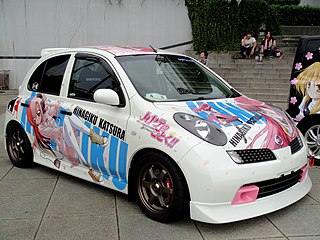 W
WIn Japan, an itasha is a car decorated with images of fictional characters from anime, manga, or video games. The decorations usually involve paint schemes and stickers. Automobiles are called itasha, while similar motorcycles and bicycles are called itansha (痛単車) and itachari (痛チャリ) respectively.
 W
WKabedon or kabe-don refers to the action of slapping a wall fiercely, which produces the sound "don". One meaning is the action of slapping the wall as a protest which occurs in collective housing like condominiums when the next room makes noise. Another meaning often appears in shōjo manga or anime when one character forces another against the wall with one hand or leans against the wall and makes the sound of "don", and this has become popular as a "clever move of confession".
 W
WKaijudo is a 2012 American animated series and trading card game that serve as a spin-off and relaunch of the Japanese Duel Masters franchise. The animated series was produced by Hasbro Studios, animated by Moi Animation in South Korea, and developed by Henry Gilroy and Andrew R. Robinson for Wizards of the Coast.
 W
WA light novel is a style of Japanese young adult novel primarily targeting high school and middle school students. The term "light novel" is a wasei-eigo, or a Japanese term formed from words in the English language. Light novels are often called ranobe (ラノベ) or, in English, LN. The average length of a light novel is about 50,000 words, close to the minimum expected for a Western novel, and they are usually published in bunkobon size, often with dense publishing schedules.
 W
WIn Japanese popular culture, lolicon is a genre of fictional media in which young girl characters appear in sexual or suggestive contexts. The term, a portmanteau of the English phrase "Lolita complex", also refers to desire and affection for such characters, and fans of such characters and works. Associated with unrealistic and stylized imagery within manga, anime, and video games, lolicon in otaku culture is understood as distinct from desires for realistic depictions of girls, or real girls as such, and is associated with the concept of moe, or feelings of affection and love for fictional characters as such.
 W
WMagical girl is a subgenre of Japanese fantasy media centered around young girls who possess magical abilities, which they typically use through an ideal alter ego into which they can transform.
 W
WManga are comics or graphic novels originating from Japan. Most manga conform to a style developed in Japan in the late 19th century, and the form has a long prehistory in earlier Japanese art. The term manga is used in Japan to refer to both comics and cartooning. Outside of Japan, the word is typically used to refer to comics originally published in the country.
 W
WA manga artist is a comic artist who writes and/or illustrates manga. As of 2006, about 3000 professional manga artists were working in Japan.
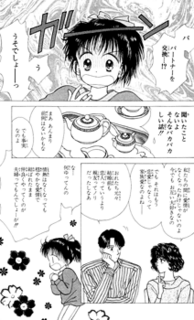 W
WJapanese manga has developed its own visual language or iconography for expressing emotion and other internal character states. This drawing style has also migrated into anime, as many manga stories are adapted into television shows and films. While this article addresses styles from both types of output, the emphasis here is on the manga origins for these styles.
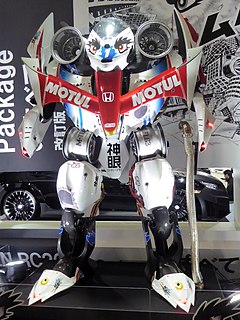 W
WThe term mecha may refer to both scientific ideas and science-fiction genres that center on giant robots or machines (mechs) controlled by people. Mechas are typically depicted as humanoid walking vehicles. The term was first used in Japanese: 'mecha', after shortening the English loanword 'mechanism' or 'mechanical' , but the meaning in Japanese is more inclusive, and 'robot' or 'giant robot' is the narrower term.
 W
WMoe , sometimes romanized as moé, is a Japanese word that refers to feelings of strong affection mainly towards characters in anime, manga, video games, and other media directed at the otaku market. Moe, however, has also gained usage to refer to feelings of affection towards any subject.
 W
WMoe anthropomorphism is a form of anthropomorphism in anime and manga where moe qualities are given to non-human beings, objects, concepts, or phenomena. In addition to moe features, moe anthropomorphs are also characterized by their accessories, which serve to emphasize their original forms before anthropomorphosis. The characters here, usually in a kind of cosplay, are drawn to represent an inanimate object or popular consumer product. Part of the humor of this personification comes from the personality ascribed to the character and the sheer arbitrariness of characterizing a variety of machines, objects, and even physical places as cute.
 W
WThe Odagiri effect is a television phenomenon in which a program attracts a larger than expected number of female viewers because the program stars attractive male actors or characters. It is named after the Japanese actor Joe Odagiri, who starred in the 2000 tokusatsu show Kamen Rider Kuuga. The effect is now deployed deliberately in some shows, and is most commonly used in sports-themed and idol-themed anime.
 W
WOtokonoko is a Japanese term for men who have a culturally feminine gender expression. This includes amongst others males with feminine appearances, or those cross-dressing. "Otokonoko" is a play on the word 男の子, which is also pronounced otokonoko; in the slang term, the kanji for "child" (子) is substituted with "daughter"/"girl" (娘).
 W
WRule 63 is an Internet meme that states that, as a rule, "for every given male character, there is a female version of that character" and vice versa. It is one of the "Rules of the Internet" that began in 2006 as a Netiquette guide on 4chan and were eventually expanded upon by including deliberately mocking rules, of which Rule 63 is an example. It began to see general use in fandom communities as a term to refer to both fan-made and official gender-swaps of existing fictional characters.
 W
WTankōbon is the Japanese term for a book that is not part of an anthology or corpus. In modern Japanese, the term is most often used in reference to individual volumes of a manga series: most series first appear as individual chapters in a weekly or monthly manga magazine anthology with other works before being published as tankōbon volumes containing several chapters each.
 W
WTruck-kun is an internet meme concerning the isekai genre of anime and manga, in which characters are transported to other worlds. As many of the protagonists are sent to these worlds via reincarnation after death, several of the characters are transported by being killed when they are hit by a truck. After several isekai works used this method of killing their characters, a meme spread claiming "Truck-kun" was a character appearing in several manga whose job it is to kill people in their original world and to send them to a new one.
 W
WWotagei (ヲタ芸), also known as otagei (オタ芸), refers to a type of dancing and cheering gestures performed by wota, fans of Japanese idol singers, involving jumping, clapping, arm-waving and chanting slogans. Wotagei is performed at concerts, or at events such as anime and manga conventions and meetings of idol fan groups, and it is thought to have developed from the ōendan, organised cheering squads common at sporting events in Japan. Wotagei is particularly associated with fans of Hello! Project and AKB48 idols, as well as fans of anime and game voice actresses (seiyuu), who often perform theme songs for the series in which they appear.
 W
WYaoi, also known by the wasei-eigo construction boys' love and its abbreviation BL , is a genre of fictional media originating in Japan that features homoerotic relationships between male characters. It is typically created by women for women and is distinct from homoerotic media marketed to gay men, but it does also attract a male audience and can be produced by male creators. It spans a wide range of media, including manga, anime, drama CDs, novels, video games, television series, films, and fan works. "Boys' love" and "BL" are the generic terms for this kind of media in Japan and much of Asia; though the terms are used by some fans and commentators in the West, yaoi remains more generally prevalent in English.
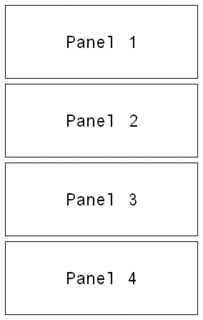 W
WYonkoma manga , a comic strip format, generally consists of gag comic strips within four panels of equal size ordered from top to bottom. They also sometimes run right-to-left horizontally or use a hybrid 2×2 style, depending on the layout requirements of the publication in which they appear. Although the word yonkoma comes from Japanese, the style also exists outside Japan in other Asian countries as well as in the English-speaking market, particularly in mid-20th century United States strips, where Peanuts popularized the format.
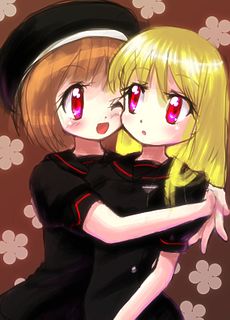 W
WYuri , also known by the wasei-eigo construction girls' love , is a genre of Japanese media focusing on intimate relationships between female characters. While lesbianism is a commonly associated theme, the genre is also inclusive of works depicting emotional and spiritual relationships between women that are not necessarily romantic or sexual in nature. Yuri is most commonly associated with anime and manga, though the term has also been used to describe video games, light novels, and literature.
 W
WZettai ryōiki refers to the area of bare skin in the gap between overknee socks and a miniskirt. It can also be used to describe the clothing combination. The term first became widespread in otaku slang as one of the attributes of moe characters in anime and manga, but it is now used by the general public in Japan.